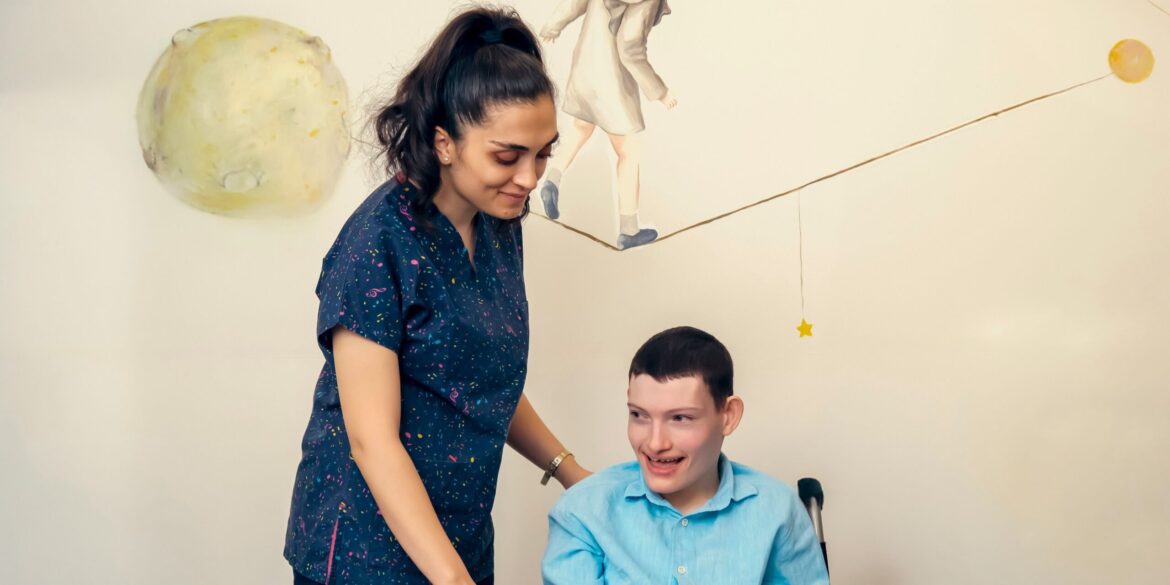The observance of World Cerebral Palsy Day, a worldwide initiative designed to raise awareness about cerebral palsy and to support ongoing research into the condition. This day serves as an important opportunity to highlight the challenges faced by individuals with cerebral palsy, educate the public about the condition, and promote the necessary changes in society that can lead to greater inclusion and accessibility for those affected.
Cerebral palsy is a neurological disorder that affects movement, muscle coordination, and motor skills. It is caused by brain damage or abnormal brain development, typically occurring before, during, or shortly after birth. The severity of the condition varies greatly from one individual to another, ranging from mild forms that may only cause slight movement difficulties to more severe cases that significantly impair a person’s ability to walk, talk, and engage in everyday activities. Although there is no cure for cerebral palsy, advances in medical care, therapy, and technology have made it possible for individuals living with the condition to experience a better quality of life and increased independence.
The significance of World Cerebral Palsy Day goes far beyond simply raising awareness. It emphasizes the critical need for continued research to improve treatments and to develop new interventions that can help individuals with cerebral palsy lead fuller, more independent lives. Despite advancements in healthcare and therapy options, there is still much to learn about the condition, and more work is needed to uncover the best ways to support those affected. Research efforts are ongoing, focusing on everything from medical treatments to innovations in assistive technologies, with the goal of offering individuals with cerebral palsy new opportunities for mobility, communication, and overall independence.
This day also shines a light on the importance of fostering inclusivity in all aspects of society. For individuals with cerebral palsy, accessibility is a critical factor in enabling participation in education, employment, and social activities. Whether it’s ensuring that schools, workplaces, and public spaces are designed to accommodate people with disabilities or advocating for accessible transportation and healthcare services, World Cerebral Palsy Day calls attention to the ways society can create environments that empower individuals with cerebral palsy to thrive. The day encourages people to think about how their communities can become more inclusive by implementing policies, infrastructure, and systems that allow everyone, regardless of their physical abilities, to fully participate.
Throughout the world, events are held to mark World Cerebral Palsy Day, bringing communities together to participate in educational workshops, discussions, and activities that promote understanding and action. These events not only help raise awareness but also provide an avenue for people to connect with local organizations dedicated to supporting individuals with cerebral palsy. These organizations play a crucial role in offering support services, from providing therapy and medical care to offering educational resources for families and caregivers. In addition, the day encourages people to take practical steps toward helping the cerebral palsy community, whether it’s through volunteering, donating to relevant causes, or simply taking the time to learn more about the condition.
For many individuals with cerebral palsy, the challenges they face are compounded by the social stigma surrounding disabilities. This stigma can result in exclusion from mainstream opportunities and activities, further marginalizing those who are already facing physical challenges. World Cerebral Palsy Day highlights the importance of empathy and support from society. By fostering a greater understanding of cerebral palsy, the day aims to break down the barriers that lead to discrimination and ensure that people with disabilities have the same rights and opportunities as those without. Ultimately, the goal is to create a society where individuals with cerebral palsy can live independently, pursue careers, engage in hobbies, and enjoy fulfilling relationships without being hindered by physical or social limitations.
World Cerebral Palsy Day also serves as a reminder that much work remains to be done to improve the lives of those living with the condition. While there have been significant strides made in research and accessibility, individuals with cerebral palsy still face numerous challenges that require collective action. As the global community reflects on this day, it is an opportunity to consider how each of us can contribute to a world where individuals with cerebral palsy are not defined by their disabilities but are recognized for their unique abilities and contributions to society. By continuing to push for research advancements, fostering inclusive environments, and supporting those affected, we can ensure that people with cerebral palsy have the resources and opportunities they need to live full, independent lives.

